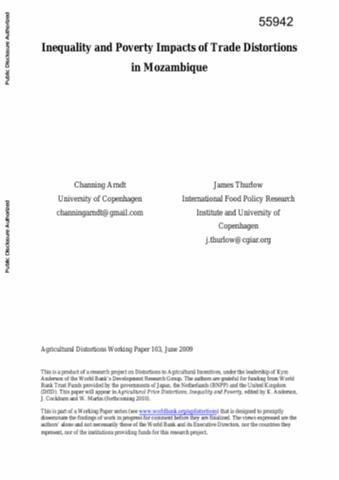Border Price and Export Demand Shocks for Developing Countries from Rest-of-World Trade Liberalization Using the Linkage Model
The volume on agricultural price distortions, inequality and poverty begins with a global study that uses the World Bank's linkage model to examine the economic impacts in various countries, regions and the world as a whole of agricultural and trade policies as of 2004. It does so by shocking that model with the removal of all agricultural price-distorting domestic and border policies with, and without, the removal of trade policies affecting all other goods.












